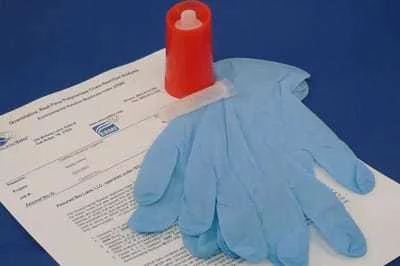McManus Kitchen and Bath provides a single place where you can work with interior design and construction professionals who can help you create a happy, healthy home. We start each project with a Design and Budget Consult. It will help you clarify your design ideas, understand the remodeling process and create a Good Better Best Budget for your project. Click Here to Schedule a Consult
Indoor Air quality is very important for a healthy home. More and more people are sensitive to the effects chemical and bio-contaminants (mold, bacteria and their by-products) have on their families health.
Buying furniture and cabinetry that is formaldehyde free and using low VOC paints is one way to avoid air quality issues in the home. Another is by identifying and dealing with mold issues in the home, especially before you remodel because mold issues can be made worse by the demolition process, spreading spores throughout the house.
Testing for Mold Before You Remodel
If you suspect elevated levels of mold in your home, it’s important to test your home before your remodel. If mold exists, the demolition process can spread the spores and make the situation much worse. Bathrooms are especially prone to mold issues but even tearing out old carpet can spread spores.
Dust sampling is an effective way to assess the health of your environment, and the ERMI (Environmental Relative Moldiness Index) test is recommended as a place to begin.
DIY Mold Testing is an economical way to test for mold yourself, much better than the cheap kits you get from home centers and less expensive than professional mold testing. If you get a result from your test that indicates you have a problem you should then consult a professional and your insurance company.
DIY Mold Testing
Mycometrics (https://www.mycometrics.com/index.html). Prices range from $155 to $290.
The test will deliver a score of moldiness based on the ERMI scale. More important than the scale results though are the particular species of molds found. Look for these species:
- Stachybotrys – This the “Black Mold” that you hear about so much
- Aspergillus versicolor
- Aspergillus fumigatus
- Aspergillus flavus
If you find you have high concentrations of those species in your home it might be time to call a mold testing specialist and consider some mold remediation strategies.
A few FAQs about mold testing:
(found at http://www.momsaware.org/mold-testing/83-ermi-mold-testing.html)
Why is a dust sample preferable to an air sample when testing your home for mold?
Air sampling is unreliable because the results are too variable. Air sampling only identifies mold spores to the genus level. It is important to know the species of mold. Mold spores are present in the dust and the dust can be examined for species of mold using PCR (ERMI) testing.
Do you recommend the ERMI test as a place to begin when testing for toxic mold?
I always recommend the ERMI tests. The moldiness index is not too meaningful, particularly for sensitive and high-risk people. The portion of the ERMI test that is important is the identification of mold species. Often dangerous molds, such as Aspergillus versicolor, fumigatus, and flavus along with certain species of Penicillium are present. These species cannot be determined by spore counts because Aspergillus and Penicillium species have almost identical spore structures. Also, Stachybotrys does not readily shed spores, but can be found in dust and bulk samples by PCR analysis.
When vacuuming for an ERMI test, is it best to vacuum in one spot, or take from a variety of places around the home?
I personally recommend doing dust samples from various areas of the house. Excellent samples areas are refrigerator coils and other hidden dust accumulation areas (e.g. under washing machines), giving the history of the home since installation of the appliances. Dust from the top of drop-down kitchen cabinets is another source. One can also use carpet dust, although this may not tell the whole story. In conclusion, collect dust from areas in the house that do not readily get cleaned. Keep all dust samples separate from each other. If the dust samples are mixed, one does not know which areas are most contaminated. However, if there is no concern for the areas involved, one can mix the dust samples. I also recommend taking bulk samples of mold growth and subjecting them to an ERMI test.
Do I need to vacuum areas that I don’t suspect have been affected by the mold?
If mold is indoors and in wall cavities, all areas of the home are probably affected. Therefore do the dust sampling as discussed above. Some areas may have fewer spores than others; however, the mold spores will drift throughout the house.
If I see visible mold but have no ill health effects, should I still test my home in this way?
Yes. How does one know that they do not have ill health effects? The health effects can range from just sneezing through systemic conditions of not feeling well.
Thanks for reading! We’d love to be a part of your next remodel. Check out our design services page.


